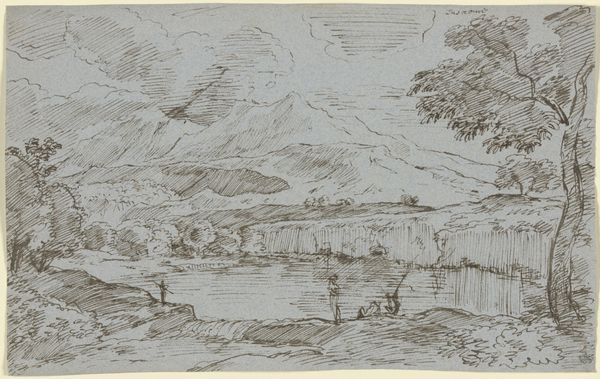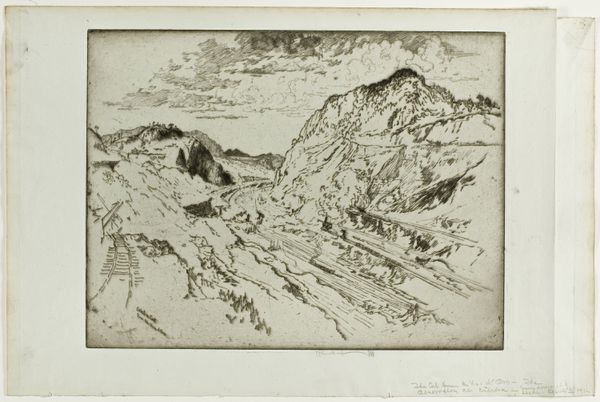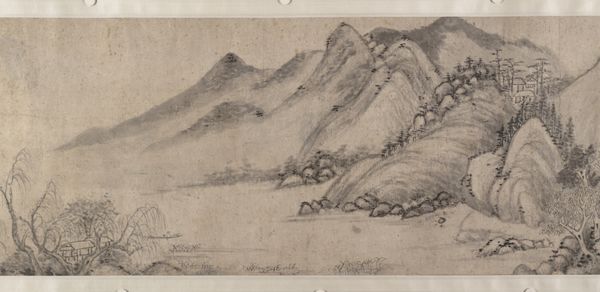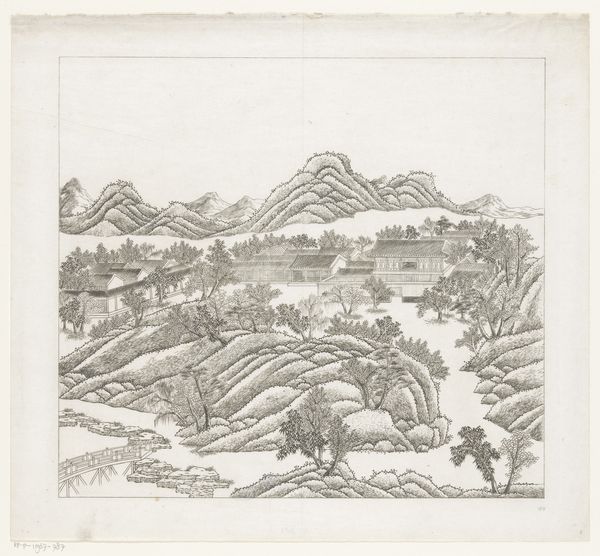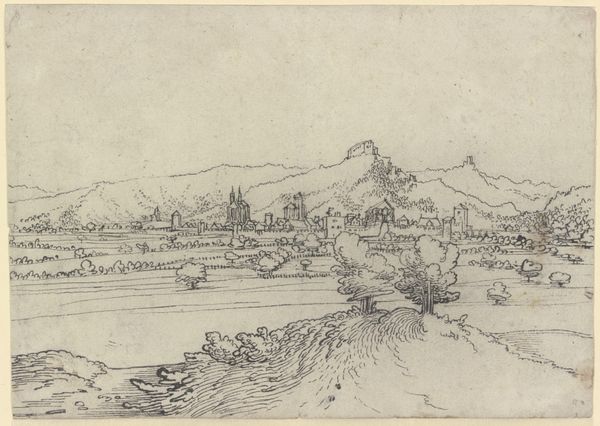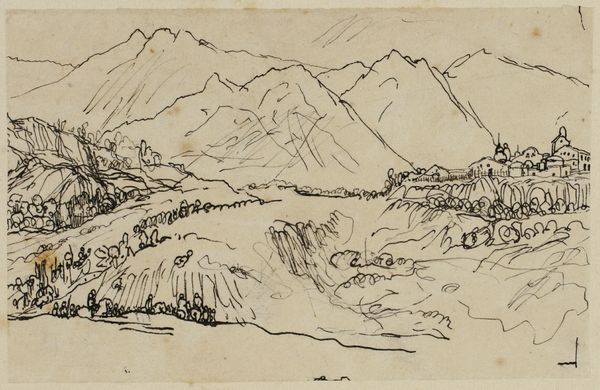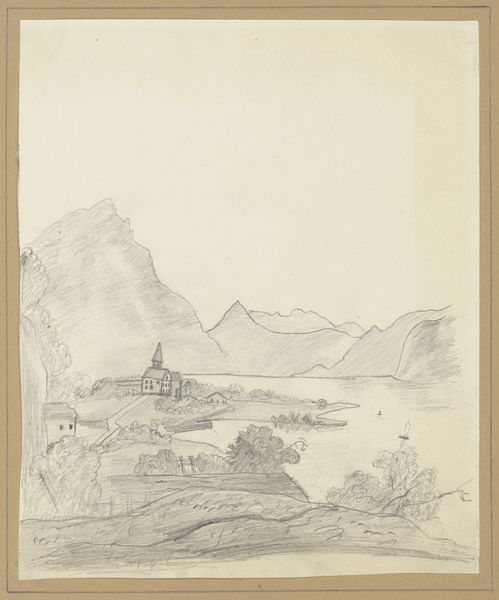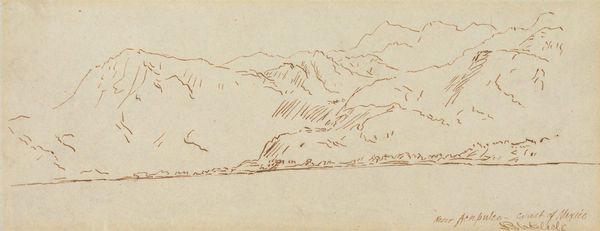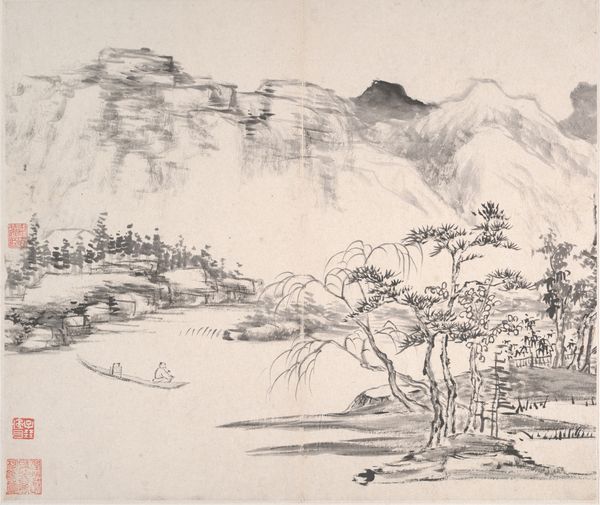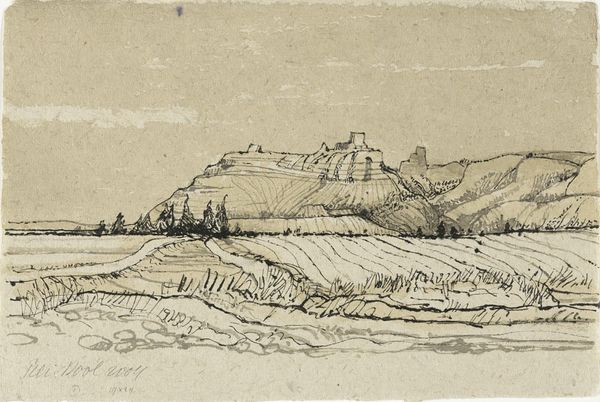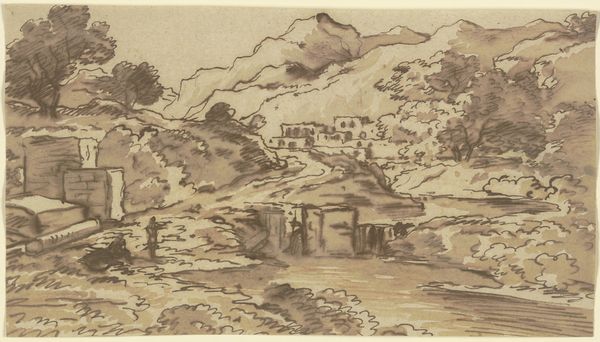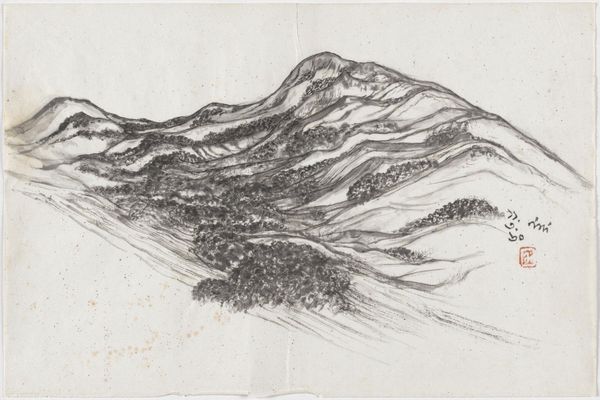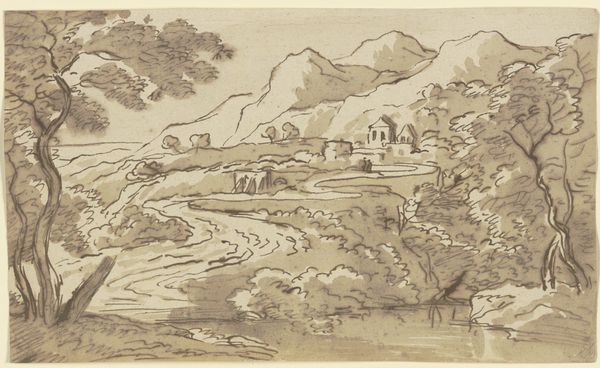
drawing, print, etching, paper, ink, pen
#
drawing
# print
#
etching
#
landscape
#
etching
#
paper
#
ink
#
geometric
#
line
#
pen
#
cityscape
Dimensions: 111 × 102 mm
Copyright: Public Domain
Editor: Here we have "The Great Bridges," an etching and ink drawing of no specific date by Rodolphe Bresdin, now residing here at the Art Institute of Chicago. There's something unsettling in the scale, in how the mountains dwarf the cityscape... What do you see in this piece? Curator: This contrast in scale speaks volumes. Bresdin often uses exaggerated imagery to express the relationship between humanity and the immensity of nature. The bridge, a symbol of connection and progress, seems almost fragile against the dominating mountainscape. Think of the cultural memory associated with mountains - places of refuge, spiritual elevation, but also untamed wilderness. Editor: That makes sense. So, the mountains aren't just scenery; they're carrying all these ideas? Curator: Precisely. The bridges themselves also carry symbolic weight. They suggest the ambitions of civilization, attempts to bridge divides both physical and metaphorical. But is the connection solid or tenuous? Consider how the lines of the etching, while incredibly detailed, also appear quite frantic and loose. Editor: Almost like the bridge could crumble at any moment? Curator: Perhaps. Bresdin’s technical skill creates a sense of unease. Does this resonate with a sense of Romantic-era anxieties about the industrial age? The potential fragility of man's achievements? What stories do you think this landscape is meant to evoke in the viewer? Editor: That the weight of history and nature is a constant presence, influencing our present. It really makes you consider the impermanence of things. Curator: Indeed. And art, like these etched lines, becomes a way of mapping and engaging with these persistent forces. It shows us that symbols, while visual, truly embody so much of ourselves.
Comments
No comments
Be the first to comment and join the conversation on the ultimate creative platform.
